Healthcare Essay On Obesity Burden In Middle East
Question
Task:
For your healthcare essay, you are requested to prepare a literature review outline of a specific area including an appropriate rationale, research question, search strategy and results identified from search with the articles located clearly documented. The key themes of the research articles should be highlighted. Choose an area that is under-researched where a meta-analysis or literature review does not exist i.e. in a specific population group, location, setting or topic. It is recommended you narrow your search to between 6-12 research articles for the word limit. Use your inclusion/exclusion criteria to do this i.e. date, geography, population.
Answer
Introduction
It is evident herein healthcare essay that technological innovation and scientific research in the field of medicine and health have been developing rapidly in recent years. Health technology and innovation have come a long way in comparison to some decades ago. Advancement in medical sciences has several benefits for public health. The life expectancy of the world population has increased from merely forty years half a century ago to more than seventy years today (Ellis, 2019). Research and development of new drugs have improved public health exponentially. New methods of mass production of drugs have made them cheaper and therefore, easily and affordably available to the general masses. This has made combating several diseases that were considered life-threatening some time ago, plausible. However, in the past several decades the living standard and lifestyles of the people have also changed drastically. New technological innovations have made lives so much easier for the people and it is only a matter to earn one’s living by sitting at a desk and working or travelling several miles in a matter of few hours without much physical strain. This report will focus on the problems arising from obesity in the Middle East, its causes and the problems. Through this analysis, recommendations will be given to tackling the problem of obesity in the Middle Eastern Region.
The Rationale Behind The Research
According to the definition provided by WHO (World Health Organisation), Obesity is the accumulation of an excessive amount of fat in the body to the point of it being abnormal concerning the BMI (Body Mass Index) of an individual. An individual with a value of BMI greater than 25 is considered overweight and with a BMI greater than 30 is obese. BMI is the index of weight for height. It is calculated as the weight of an individual in kilograms upon the square of his/her height in meters (kg/m2). As seen in a report produced by WHO, obesity around the world has almost tripled since the late 1970s. More than a billion adults were overweight and more than six hundred million were obese by 2016. The number has only increased in the years that follow. Although people are becoming aware of health hazards caused due to obesity, the number of obese people has rarely gone down. Awareness and remedy for obesity are being spread around but that does not seem to be of any help in reducing the number of obese individuals. The issue became more grave with the affected individuals also started including children (Bhadoria et al., 2015). The alarming rate at which children are affected by obesity is a matter of concern for the department of health in many countries. The number of obese children under the age of five, in 2019, was approximately forty million and the number is more than three hundred million for children within the age group of five to nineteen.
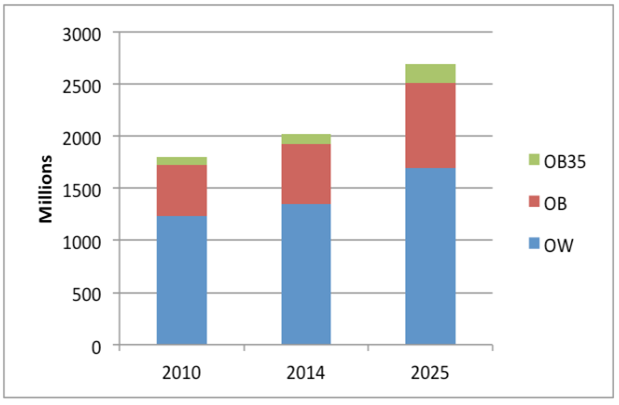
Figure 1: Global Obesity Chart
Source: (Lobstein, 2015)
Obesity in an individual triggers several other health conditions in the person because of which obesity can be life-threatening. Some of these health issues caused due to obesity are cardiovascular diseases, osteoarthritis, diabetes, and some cancers as well. It also increases stress on the lungs causing breathing difficulties, hypertension, etc. This paper focuses on the obesity trends in the Middle East counties, their causes, effects, impacts on different age groups, the effect of socio-economic conditions of the countries of the region and the studies that have been done regarding them. The Middle East region includes countries like Iran, Egypt, Turkey, Saudi Arabia, etc. In a report produced by the MONICA project which was sponsored by WHO it was provided that an average of 30% of the population of the Middle Eastern countries were found to be obese. The percentage is greater than 40% in the case of Saudi Arabia.
Background of the Research Topic
The economic development of the Middle Eastern countries in the last few decades with the exploitation of oil reserves, urbanization of the regions and contact with western culture and lifestyles caused a substantial change in the lifestyle and living standards of the people of the region. The economic boom resulted in a more lavish and luxurious lifestyle with a decrease in physical exercise (increased use of automobiles), and food habits (with the introduction of western fast-food chain) that have caused an alarming rate of increase in obesity of the overall population and especially in children and adolescents. Studies have also been made regarding the different rates in male and female in adults and children as well. The statistics of the Middle East show that the obesity rate is greater in female as compared to males.
Awareness about this abnormal increase in the obesity rate in the region alarmed the population and concerned authorities as well. Several steps were taken by the individual community, governments and WHO as well to fight against it. Some of the notable ones are WHO Commission on Ending Childhood Obesity, “Take The Stairs Challenge” initiated by Bareen International Hospital in Mohammad Bin Zayed City, Abu Dhabi and promoting healthy living and eating habits. The methods cannot be said to be completely successful as they did not make much difference in the rate of obesity (Dobranowski, 2014).
Research Questions
In light of the above rationale provided, the following research questions will be answered in the paper:
- What is the evidence that shows an increase in the obesity rate in the population of the Middle East and its consequences?
- What are the programs dedicated to combating the epidemic level of obesity and the possible reasons for the failure of such programs?
- Is it possible to learn from other regions and countries with an equally good economy and a lower rate of obesity?
- What other viable methods can be worked on to reduce the BMI of the overall population or even just flatten the rate?
Search Strategy
A search strategy for research means the structuring of keywords that can be used to find information in the database (Bramer et al., 2018). To gather information for the research on the selected topic following search strategies will be implemented:
Identification of keywords: The first step of the search strategy is the identification of keywords related to the topic. To identify the keywords, research needs to first identify the research question which has been already done above. While identifying the keywords, it is very essential to know the purpose of the research (Leist, 2019). If the purpose of the research is not clear, then there can arise a lot of confusion regarding the identification of the keywords. Since this research is focused on the obesity burden of the Middle East. The keywords for this research will be obesity, Middle East, problems, rates, demography, issues, healthcare, healthcare facilities, reasons, and challenges and so on. Then these identified keywords need to be phrased to find information in the search engine. For example, the obesity problem in the Middle East, the rate of obesity in the Middle East, the reason and issues of obesity and so on. These phrases and keywords are essential to be identified because without these keywords a researcher cannot find information accurately. To find appropriate information the keywords are to be identified properly.
Use of Boolean Operators: Once the keyword and the key phrases have been identified, the next step is to combine the words and phrases using the Boolean operators. The words not, and, or are the Boolean operators that help the researchers to find more precise results. When the Boolean operator is used in the library database, the search results are more precise and a lot of time is saved. The word “AND” allows the streamlining of the search by commanding the database that all the keywords being inserted should be searched. Example reason and problems of obesity, this phrase commands the database to search for both reasons as well as the problems of obesity. While using “OR” the search engine tells the database that either information connected to the keywords is acceptable. This Boolean operator is used when the researcher is searching for information using synonyms. The "NOT" Boolean operator will command the database to eliminate all the information that is specified in the keyword this operator is used when a researcher is interested in finding the information regarding a specific topic only.
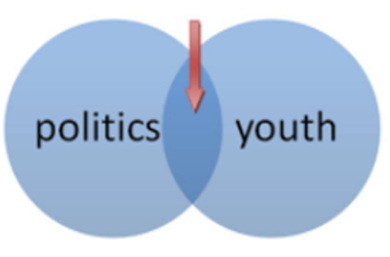
Figure 2: “AND” Boolean Operator
Source: (Martek, 2020)
Selection of database sources: Now that the keywords and the key phrase have been identified and the Boolean operator is implemented. The next step is the identification and selection of the database from where the information can be extracted. A collection of the huge amount of data that is stored to assess for research is called a database. The database is simply a collection of data that can be accessed through a computer device. This is the reason the database is also called an electronic database because the data are available through an electronic medium. Different database sources can be used to extract information regarding the burden of obesity in the Middle East. The different databases that will be used for gathering information for this research are e-books, articles, journals, newspaper reports, case studies and relevant website. Using these databases different information related to the research topic can be extracted and used for analysis (Ajayi, 2017). In these databases, the information can be gathered by typing the keyword or key phrase identified in the second step. By using the selected database all the historical and current information regarding Middle East obesity can be gathered and used for research.
Elimination of unwanted information: In a database, there is much information that can be related to one keyword. For example, if the keyword the Middle East is used to find information in a database, then there are thousands of articles, journals and reports related to the Middle East. Therefore, in the fourth step, the focus should be on the elimination of unwanted information present in the database. There is much information that is obsolete and irrelevant in the present and it is useless to read it. Therefore one of the methods of eliminating unwanted information is commanding the database to show articles or journal of a specific time. This will save a lot of time that is wasted on reading information that is not useful for research. This is also the time when the Boolean operator discussed in the third step is used to derive the most appropriate information. Since all the information present in the database is not relevant cannot be used for research. Only the most relevant information regarding the obesity of the Middle East has been taken into the consideration for the research purpose. Another method of eliminating unwanted information is looking up for the article and work of particular authors.
Inclusion and Exclusion Criteria: The inclusion and exclusion criteria are the conditions that tell researches which information is to be included and which information are to be excluded. To make this research as relevant as possible some criteria have been set for the inclusion and the exclusion of the information. Since most of the old data are obsolete and not applicable in the present scenario. All the information taken from articles, survey reports, case studies and other information sources is not older than 2014 (Samuels, 2019). This ensures that the research is done as per the current and up to date data. To keep up the credibility and the reliance of the research result only the authentic and relevant website are used for gathering data and information. Furthermore, the case studies taken for gathering information are the case studies related to the Middle Eastern countries. This will make the research more focused and specific and the results are more relevant. Therefore, the inclusion and exclusion criteria are dates, geographical location, publication type, article type, peer review and authenticity of the websites. These are the search strategies for the research regarding the burden of obesity in the Middle East.
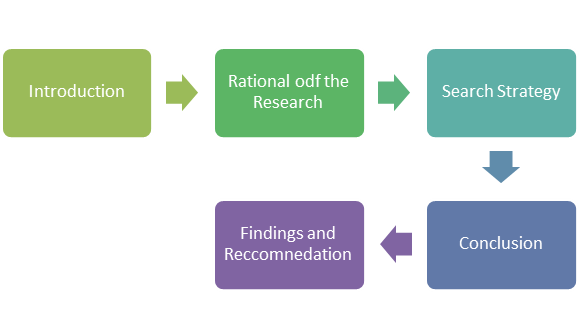
Figure 3: Flow Diagram of the Research
Source: (Self-Created)
Main Findings
Obesity around the world has tripled since the year 1975 where 39% of adults are overweight and 13% of them are obese. As per the research conducted, it has been found out that the numbers of overweight people are comparatively more than the number of underweight people. As per Brazier, (2018) obesity is a chronic disease that is caused due to high cholesterol, high blood pressure, diabetes of type II, heart problem, arthritis and cancer. Furthermore, it was found that the healthcare expenses of obese people are 36% more than the healthcare expenses of normal people. Therefore, a high number of obesity in the Middle East poses a risk for both the public health system and the standard of living for the people. It will not be wrong to say that obesity is a burden to the Middle East.
As per the reports of WHO in 2018, the percentage of obese women in the Middle Eastern region is much higher than the percentage of obese men all around the world. The percentage of men affected by obesity in the Middle Eastern region is only 15.7% that is close to the men obesity ratio of the world. Whereas the percentage of obese women is 26%, which is two times higher than the average obese women around the world. However, there are other countries where the female obesity rate crosses 40%, while the percentage of obese men remains below the average percentage. According to the 2016 report of WHO, approximately 650 million adults were found to be obese.
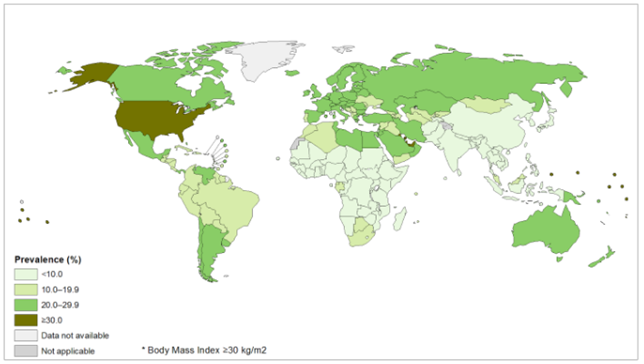
Figure 4: Female Obesity in the World
Source: (McGinn, 2018)
According to ALNohair, (2014), the reason for the high rate of obesity in the Middle Eastern region is urbanization. The residents of urban areas consume food that has a high level of sugar and fat and are hyper-caloric food. With the consumption of such fat building food, the population of the Middle East has a sedentary lifestyle. Their lifestyle does not involve many physical activities because their life is associated with a high level of income and education. The major reason for the rate of obese women to be high in the Middle Eastern region is that their beliefs and culture require women to stay at home and be a homemaker. A majority of women in the Middle Eastern are prohibited and restricted from using gymnasiums and swimming pool and they are further criticized if they are seen exercising in a public place. This is done in the Middle Eastern region because of their culture and belief. The reason for obesity among children is because they are fed with food is rich in carbohydrate and contains processed sugar. The culture in the Middle Eastern does not promote sports and physical activities, which is a major cause of obesity among the Middle Eastern population. Another reason why there is more obese female in the Middle Eastern region is that their culture appreciates heavier female bodies.
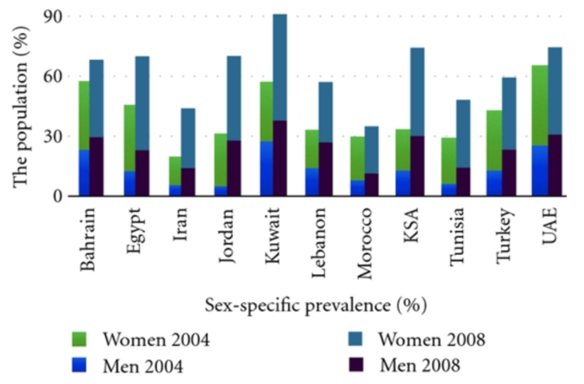
Figure 5: Obesity in Middle Eastern Countries
Source: (Bassinello, 2019)
Obesity can be a burden to the Middle Eastern region because it directly affects their national economy. One of the major economic effects is the medical spending of the nation. Various diseases are directly associated with obesity. Diseases like hypercholesterolemia, hypertension, asthma, strokes and so on (Seidell and Halberstadt, 2015). These diseases involve high medical expenses on the patient as well as the government. Another effect of obesity can be seen on the productivity level of the nation. Due to the problem of obesity, people cannot get involved in labour-intensive jobs and this causes a decline in the supply of labour in the Middle Eastern region. Other burdens that are caused by obesity are transportation cost because people are unable to physically move from one place to another.
In the year 2010, the Middle Eastern countries developed a programme that would promote physical activities and reduce the rate of obesity. The programme was a 5-year plan with the core objective of controlling and reducing the obesity and overweight population in the Middle Eastern region. This programme was developed with the vision of promoting health awareness and healthy weight by implementing physical exercises and activities among the population. This programme would reduce the rate of chronic diseases, morbidity and disabilities. Furthermore, these findings will guide the development of future polices regarding the reduction of obesity in the Middle East. Many health care measures can also be designed based on findings that can be appropriate as per the culture and practices of the Middle Eastern countries.
Recommendations
As per the finding of the research that revealed the causes and effects of obesity in the Middle Eastern region, there is little recommendation that can be given to control and minimize the obesity level. The first recommendation that can be given to reduce and control obesity in the Middle East is the promotion of health awareness. There is an urgent need for people to be educated regarding the health risk of obesity. Due to the lack of proper health education, there are increasing cases of obesity. Another recommendation that can be given is the intensive promotion of physical activities and sports. The Middle Eastern authorities should formulate policies and programme that will implement some physical activities in the sedentary lifestyle of the people in the Middle Eastern region. Freedom should be given to the females to do exercises and go to the gyms for the well-being of their health. If there is a promotion of a healthy lifestyle in the Middle Eastern region, then their obesity rate can be decreased. There should be an arrangement for health education in the schools to promote knowledge regarding healthy living in the minds of young children to and this can be effective in reducing the obesity rate of the Middle East.
Conclusion
In the conclusion of the research, it can be said that this report has been able to bring out the reason that makes obesity a burden to the Middle East. The report also gives the details of the reasons that have led to the high rate of obesity in the Middle Eastern region. Several articles, websites and journal has been taken into consideration for finding the information for the report. After a thorough analysis of the reasons and causes of obesity in the Middle East appropriate suggestions have also been given that can reduce the obesity rate of the Middle East. As per the findings, it can be concluded that the main reason for obesity is the Middle Eastern culture and belief.
References
Ajayi, V.O. (2017). (PDF) Primary Sources of Data and Secondary Sources of Data. [online] ResearchGate. Available at: https://www.researchgate.net/publication/320010397_Primary_Sources_of_Data_and_Secondary_Sources_of_Data [Accessed 8 Mar. 2021].
ALNohair, S. (2014). Obesity in Gulf Countries. International Journal of Health Sciences, [online] 8(1), pp.79–83. Available at: https://www.ncbi.nlm.nih.gov/pmc/articles/PMC4039587/.
Bhadoria, A., Sahoo, K., Sahoo, B., Choudhury, A., Sufi, N. and Kumar, R. (2015). Childhood obesity: Causes and consequences. Journal of Family Medicine and Primary Care, [online] 4(2), p.187. Available at: https://www.ncbi.nlm.nih.gov/pmc/articles/PMC4408699/.
Bramer, W.M., De Jonge, G.B., Rethlefsen, M.L., Mast, F. and Kleijnen, J. (2018). A systematic approach to searching: an efficient and complete method to develop literature searches. Journal of the Medical Library Association, 106(4).
Brazier, Y. (2018). Obesity: What is it and what causes it? [online] www.medicalnewstoday.com. Available at: https://www.medicalnewstoday.com/articles/323551 [Accessed 8 Mar. 2021].
Dobranowski, A. (2014). Challenge: take the stairs for better health. [online] Your Health Matters. Available at: https://health.sunnybrook.ca/fitness/challenge-take-stairs/ [Accessed 8 Mar. 2021].
Ellis, M. (2019). Top 10 new medical technologies of 2019 | ProClinical Recruitment blogs. [online] ProClinical. Available at: https://www.proclinical.com/blogs/2019-2/top-10-new-medical-technologies-of-2019 [Accessed 8 Mar. 2021].
Leist, R. (2019). How to Do Keyword Research for SEO: A Beginner’s Guide. [online] Hubspot.com. Available at: https://blog.hubspot.com/marketing/how-to-do-keyword-research-ht [Accessed 8 Mar. 2021].
Martek, M. (2020). [infographic] Explaining Boolean Operators With Pizza. [online] Mediatoolkit. Available at: https://www.mediatoolkit.com/blog/infographic-explaining-boolean-operators-with-pizza/ [Accessed 8 Mar. 2021].
McGinn, J. (2018). The Middle Eastern Health Inequality Paradox and the Gender Obesity Gap. [online] Middle East Centre. Available at: https://blogs.lse.ac.uk/mec/2018/10/31/the-middle-eastern-health-inequality-paradox-and-the-gender-obesity-gap/ [Accessed 8 Mar. 2021].
Samuels, M. (2019). Optimizing Inclusion and Exclusion Criteria in Clinical Research. [online] . Available at: https://www.ohsu.edu/sites/default/files/2019-07/2019-04-18%20Incl%20Excl%20Criteria%20and%20Pragmantic%20clinical%20trial%20slides.pdf.
Seidell, J.C. and Halberstadt, J. (2015). The Global Burden of Obesity and the Challenges of Prevention. Annals of Nutrition and Metabolism, [online] 66(2), pp.7–12. Available at: https://www.karger.com/article/fulltext/375143.












